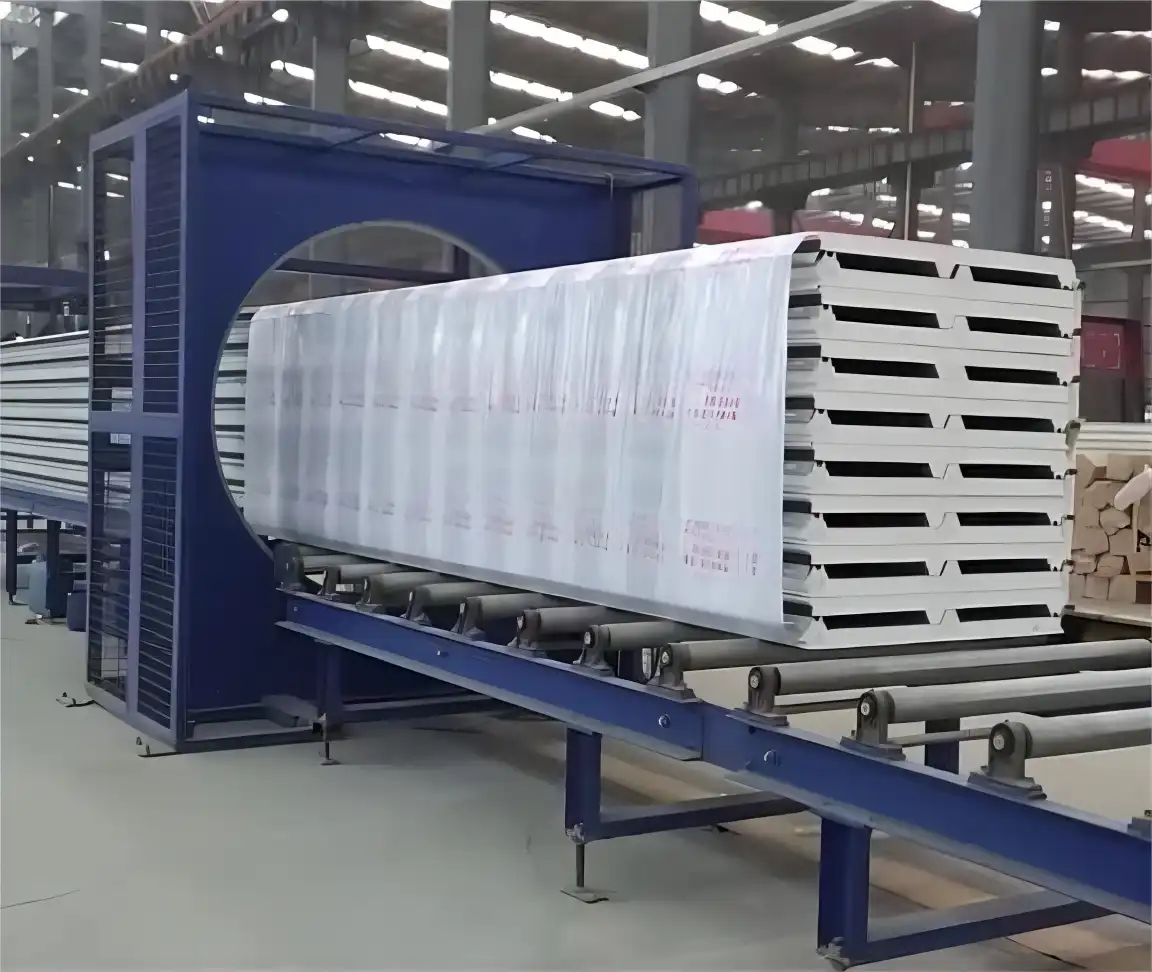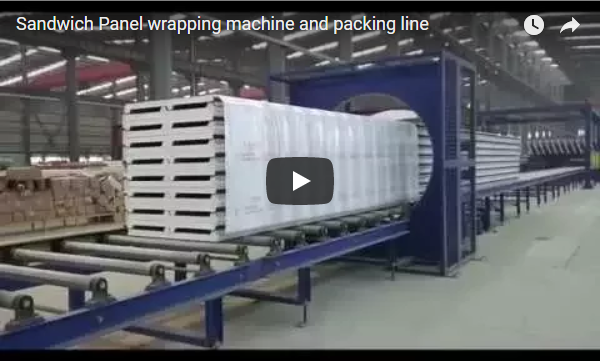Handling and packaging large, often cumbersome items like sandwich panels presents unique logistical challenges. Ensuring these panels reach their destination undamaged, protected from the elements, and ready for installation requires specialized equipment. This is where advanced horizontal orbital wrappers, specifically designed for oversized products, become indispensable assets in the construction and manufacturing supply chain.
Based on our extensive experience in industrial packaging solutions, the horizontal stretch wrapper detailed here is engineered to tackle precisely these challenges. Let's delve into the specifics of this robust machine and how it optimizes the packaging process for large-scale products like sandwich panels, timber, or profiles.
1. The Challenge: Packaging Oversized and Sensitive Materials
Sandwich panels, while structurally strong, can be susceptible to surface scratches, edge damage, and environmental factors like moisture or UV radiation during transit and storage. Their sheer size (often exceeding several meters in length) and weight make manual wrapping impractical, inefficient, and potentially unsafe. A consistent, secure wrap is crucial for maintaining product integrity and ensuring safe handling.
2. The Solution: High-Capacity Horizontal Orbital Wrapping
This specialized horizontal wrapping machine employs an orbital wrapping technique. The sandwich panel (or similar long product) moves horizontally through the machine on conveyors, while a ring carrying the wrapping material (like stretch film) rotates around it, effectively cocooning the product. This method provides a tight, uniform, and protective layer across the entire length of the panel bundle.

3. Key Technical Specifications and Operational Features
Understanding the machine's capabilities is key to appreciating its value:
- Maximum Product Dimensions:
- Bundle Outer Diameter (OD): Upwards of 1800mm
- Bundle Length: Up to 12000mm
- Wrapping Materials: Versatile compatibility with:
- Stretch Film (LLDPE) for containment and stabilization
- Polyethylene (PE) Film for enhanced protection
- Paper (e.g., VCI paper for anti-corrosion)
- Control & Automation:
- Available in Semi-Automatic and Fully Automatic configurations to match throughput requirements and budget.
- Typically features PLC control with a user-friendly HMI (Human-Machine Interface) for setting parameters.
- Customization:
- Adjustable Wrapping Tension: Ensures a tight wrap without damaging the product edges.
- Variable Ring Speed: Allows optimization based on product type and desired throughput.
- Adjustable Film Overlap: Controls the amount of protection and material consumption.
- Selectable Film Width: Adapts to different wrapping needs.
- Integration: Designed for seamless integration with:
- Powered Roller Conveyors (infeed and outfeed) for automated handling.
- Potentially other systems like automated labeling or strapping units.
4. Operational Efficiency and Ease of Use
Despite handling large loads, these machines are designed for efficiency. In automatic mode, sensors detect the product's leading and trailing edges, initiating and terminating the wrap cycle automatically. The orbital wrapping process itself is continuous and significantly faster than manual methods. From our experience, operators find the HMI controls intuitive, allowing for quick adjustments to wrapping programs for different product sizes or packaging requirements.
5. Tangible Benefits for Your Business
Investing in a specialized horizontal wrapper delivers substantial advantages:
- Superior Product Protection: Shields panels from moisture, dust, dirt, and handling damage, reducing costly returns or repairs.
- Enhanced Load Stability: A tight, consistent wrap unitizes bundles, making them safer and easier to handle, transport, and store.
- Reduced Labor Costs: Automation minimizes the need for manual wrapping, freeing up personnel for other tasks and reducing ergonomic risks.
- Improved Throughput: Significantly faster wrapping cycles compared to manual or less specialized methods.
- Material Savings: Optimized film usage through precise tension and overlap control.
- Professional Presentation: Neatly wrapped panels project a higher quality image to end customers.
6. Considerations When Choosing Your Machine
Selecting the right wrapper involves assessing:
- Panel Types & Sizes: Consider the range of dimensions (length, width, height/stack size) you handle.
- Throughput Needs: How many panels or bundles per hour/shift do you need to process?
- Level of Automation: Does a semi-automatic suffice, or is full automation needed for your workflow?
- Material Requirements: Do you need stretch film only, or also PE, paper, or specialized films?
- Factory Layout: Ensure sufficient space for the machine and associated conveyors.
7. Seamless Integration into Your Production Line
The true power of this machine is often realized when integrated into a larger packaging line. Roller conveyors facilitate the smooth transfer of panels into and out of the wrapping station, minimizing manual handling and creating a continuous flow. This integration is key to maximizing efficiency in high-volume production environments. For insights into transport packaging standards, resources like the International Safe Transit Association (ISTA) can be valuable.
In conclusion, the horizontal stretch wrapper designed for large OD (over 1800mm) and long-length (up to 12000mm) products is far more than just a packaging machine; it's a strategic investment in product integrity, operational efficiency, and supply chain optimization, particularly vital for industries dealing with materials like sandwich panels. Its robust build, customizable features, and automation capabilities make it an essential component for modern manufacturing and logistics operations.
For further details or to discuss your specific large-dimension wrapping requirements:
https://www.fhopepack.com/Horizontal_wrapping_machine.html
info@fhopepack.com


